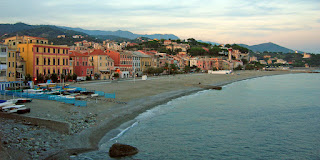Ludovico Einaudi – composer
Musician world famous for his unique blend of sounds
Pianist and film music composer Ludovico Maria Enrico Einaudi was born on this day in 1955 in Turin. Einaudi has composed the music for films such as The Intouchables and I’m Still Here and has released many solo albums for piano and orchestra. His distinctive music, which mixes classical with contemporary rhythms of rock and electronic, is now played all over the world and has been used as background music and in television commercials. Einaudi’s mother, Renata Aldrovandi, played the piano to him as a child and her father, Waldo Aldrovandi, was a pianist, opera conductor and composer, who went to live in Australia after the Second World War. His father, Giulio Einaudi, was a publisher, who worked with authors Italo Calvino and Primo Levi, and his grandfather, Luigi Einaudi, was President of Italy between 1948 and 1955. Einaudi started composing his own music and playing it on a folk guitar when he was a teenager. He began his musical training at the Conservatorio Verdi in Milan, obtaining a diploma in composition in 1982. He took an orchestration class with the composer Luciano Berio, in which, according to Einaudi himself, he learnt to have a very open way of thinking about music. Read more…
________________________________________
Franco Nero – actor
The film Camelot sparked long love affair with English actress
Francesco Clemente Giuseppe Sparanero, better known by his stage name Franco Nero, was born on this day in 1941 in San Prospero Parmense. Nero became well-known for playing the title role in Sergio Corbucci’s Spaghetti Western film Django in 1966 and then reprising the role in Nello Rossati’s film Django Strikes Again in 1987. The actor has had a long-standing relationship with British actress Vanessa Redgrave, which began in the 1960s during the filming of the musical comedy-drama Camelot. They had a son, Carlo Gabriel Redgrave Sparanero in 1969. Now known as Carlo Gabriel Nero, their son is a screenwriter and director. Franco Nero was the son of a Carabinieri officer, who was originally from San Severo, a city in the province of Foggia in Apulia. He grew up in Bedonia in Emilia-Romagna and then in Milan, where he studied briefly at the Economy and Trade Faculty of the University. He left there to study at the Piccolo Teatro in Milan. Nero’s first film role was a small part in Giuseppe Fina's Pelle Viva in 1962. After his success in Django, he played the part of Lancelot in Camelot, opposite Vanessa Redgrave as Guinevere, in 1967. Read more…
_______________________________________
Fred Buscaglione - singer and actor
Fifties sensation who died tragically young
The singer and actor Fred Buscaglione, a nightclub singer who became a huge star of the pop world in 1950s Italy, was born on this day in 1921 in Turin. Buscaglione’s style - he portrayed himself tongue-in-cheek as a sharp-suited gangster with a taste for whiskey and women - caught the imagination of an Italian public desperate to be entertained after the austerity of Fascism, when all ‘foreign’ music was banned. He formed a partnership with the writer Leo Chiosso after their first collaboration, on a song called Che bambola (What a Babe!), which resulted in more than one million record sales, catapulting Buscaglione to fame. They had several more hits, including Love in Portofino, which was covered by Andrea Bocelli in 2013 as the title track from an album. Born Ferdinando Buscaglione, he was from a creative family. His father was a painter and his mother a piano teacher. They enrolled their son at the Giuseppe Verdi Conservatory in Turin at the age of 11 but by his teens Buscaglione had adopted jazz as his passion. His career as a singer and musician was going well and Chiosso was one of the friends he had made through his appearances in night clubs around Turin. Read more…
________________________________________
Prospero Alpini - botanist
How coffee was first introduced to Europe
Physician and botanist Prospero Alpini was born on this day in 1553 in Marostica near Vicenza. He is credited with being the first person in Europe to observe and write about the coffee plant. Alpini went to study medicine in Padua in 1574 and after taking his degree settled down to work as a doctor in nearby Campo San Pietro. He was very interested in botany and so to extend his knowledge of exotic plants he travelled to Egypt in 1580 as physician to George Emo, the Venetian consul in Cairo. While in Egypt he studied date trees which helped him to work out that there were gender differences between plants. He wrote that: “the female date trees or palms do not bear fruit unless the branches of the male and female plants are mixed together, or, as is generally done, unless the dust found in the male sheath or male flowers is sprinkled over the female flowers.” In 1593 he was appointed professor of botany at Padua University and, after he died in 1617, he was succeeded in the role by his son, Alpino Alpini. His botanical work De Medicina Aegyptiorum is believed to contain the first report on the coffee plant ever published in the western world. Read more…
2.jpg)



.jpg)
.jpeg)


.jpg)
.png)









